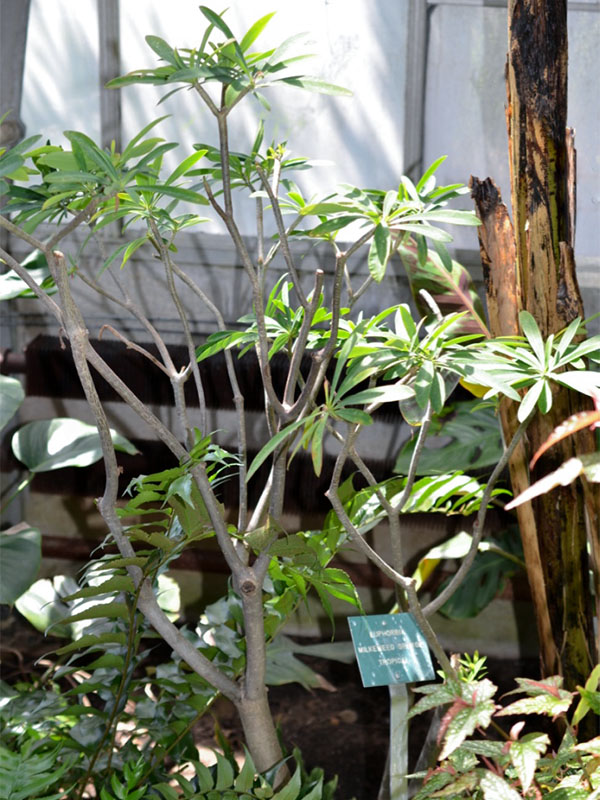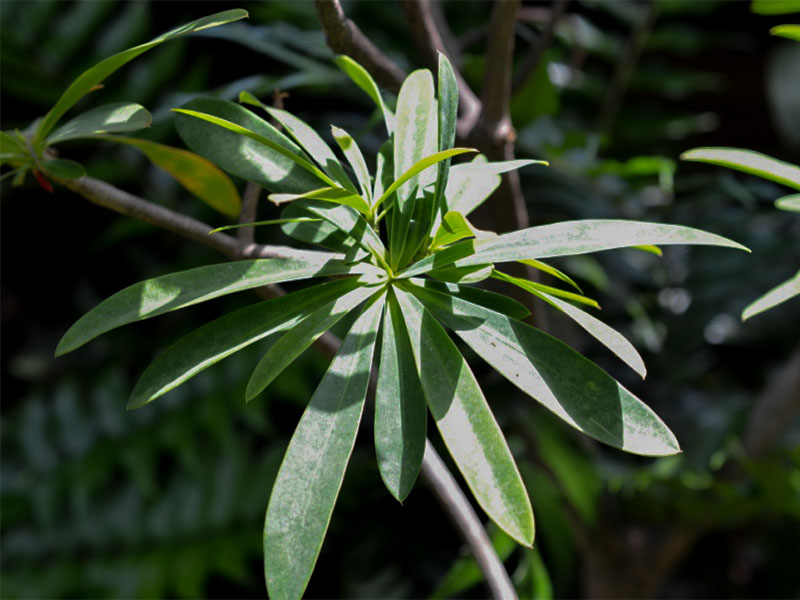| General Description | Hemispherical semi-succulent shrub that can easily be recognized from long distance by its reddish branches. |
| Cultivation | Grows best in full sun to partial shade with deep sandy soil. Water moderately from autumn to spring, and during the summer diminish waterings to once a month. |
| Notable Specimens | Centennial Conservatory, Thunder Bay, Ontario, Canada. |
| Habitat | Grows in exposed, open terrain, on rocky (mostly calcareous) ground, 0 - 600 meters above sea level, but is found occasionally up to 900 meters. |
| Leaf Description | Alternate, clustered at end of branches but somewhat spaced out. Oblong-lanceolate, entire, attenuate at the base, and somewhat mucronate at the tip, rounded or sub-truncate, up to 6.5 cm long and 8 mm wide, sessile, glabrous and with single vein, eventually deciduous when in drought. |
| Flower Description | Inflorescences are terminal, umbellate, with 5-8 bifurcate, rays to 5 cm long. Cyathia is sub-sessile, egg-shaped, and 5 mm in size. Each cyathium consists of one female flower, with a three-lobed ovary, and up to six male flowers, surrounded by round glands. |
| Fruit Description | Fruit is deeply three-lobed, 5 - 6 cm in width, 7 mm in length, dehiscent, and contains 3 seeds. Seeds are ovoid, laterally compressed, grow to 3 mm, and carry a rounded caruncle. |
| Colour Description | Fruit is grey-green, with the seeds within being opaque brown or greyish black. Cyathia is yellowish green. Leaves are light green. Bark ranges from a deep red to reddish brown. |
| Texture Description | Fruit and seeds are smooth. |

